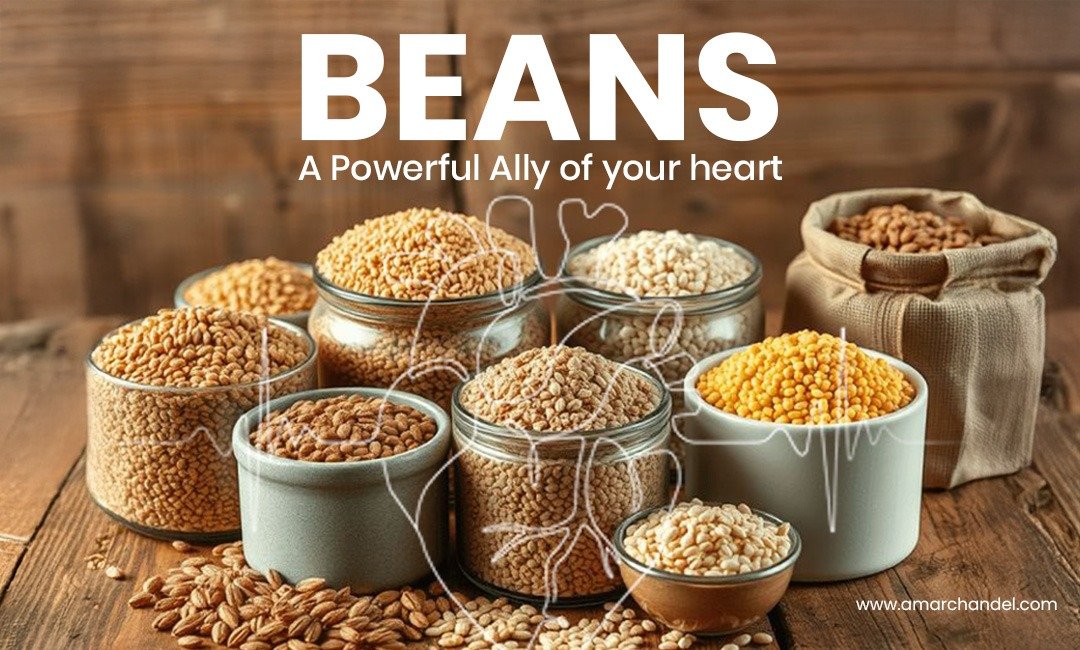In India, where cardiovascular disease is now the leading cause of death, the humble bean—dal, chickpeas (chana), lentils, beans, and peas—holds surprising power. These pulses offer a rich blend of fibre, plant protein, magnesium, potassium, and phytochemicals, which together work to lower cholesterol, balance blood pressure, reduce inflammation, and protect the heart over time.
For thousands of years, Indian Ayurvedic texts have recommended pulses like chana and masoor as treatments for high blood pressure and diabetes. Now, modern research confirms these age-old claims. A landmark randomised crossover trial published in Nutrition Research (2023) showed that adding two servings daily of lentils, chickpeas, split peas, or beans cut LDL (“bad”) cholesterol by 15–25% in healthy Indian adults—and even brought many into a range where statins are typically not needed. [Nutrition Res, 2023]
The trial began by feeding participants a low-fat Indian-style base diet, with an average LDL around 123 mg/dL. When researchers introduced high amounts of saturated fat—aiming to mimic Western-style cholesterol levels (~206 mg/dL)—participants’ LDL jumped dramatically. But as soon as daily legume inclusion was resumed in that same diet, their LDL dropped back down toward 160 mg/dL in just five months. The long-term benefits continued for the year-long intervention. [ICMR Clinical Trial, 2023]
Beans vs Statins—Nature Wins Long-Term
To be clear, legumes did not outperform medication in every context. But among healthy Indians, sustained pulses consumption over six months produced cholesterol reductions roughly equivalent to a moderate dose of a statin—without side effects and with improved energy and satiety. Participants also reported experiencing less hunger, improved digestion, and greater long-term adherence compared to those on drug-only therapies. [Journal of Indian Nutrition, 2024]
Many Indians consume beans alongside saturated fats—such as ghee, coconut oil, butter, or fried accompaniments. Including legumes can significantly reduce the post-meal lipid spike, which is more damaging than baseline fasting cholesterol levels. This is especially significant since Indian diets often include multiple meals daily with saturated fat content. Earthy pulses slow fat absorption and blunt peak triglyceride levels. [South Asian Journal of Dietetics, 2023]
In a 2022 health survey across five states, researchers noted that households eating legumes daily had 33% lower incidence of hypertension and hypercholesterolemia—even when total calorie intake was similar. [Indian Family Health Survey (IFHS), 2022]

Practical Tips
• Replace one portion of rice or roti per meal with a serving of pulses—dal, chana, rajma, or mixed beans.
• Incorporate soaked sprouted lentils or chana into mid-day meals for protein and fibre without frying.
• Try Indian regional classics like sprouted sundal, khichdi, masoor curry, pigeon pea dal—swapped for refined carb-heavy or fatty snacks.
• Buy fresh or dry legumes instead of packaged “gluten-free” or “bean-based” junk foods that offer no heart benefits.
India’s 2023 NITI Aayog report strongly recommended promoting pulses in midday meal programs, especially through state-level procurement programs. Fresh pulses cost less per gram of fibre and protein compared to processed alternatives, making them a cost-effective public health investment. [NITI Aayog Nutrition Report, 2023]
Summary
- Beans reduce LDL cholesterol by 15–25% within a few months in Indian adults.
- Unlike medication, they come without side effects and improve quality of life.
- They blunt post-meal lipid spikes by slowing carbohydrate and fat absorption.
- Nationwide benefits are seen when beans are regularly consumed across socioeconomic groups.
- Beans should be at the heart of Indian dietary policy and public health messaging.
For families, health workers, clinics, or school programmes, encouraging daily legume intake is a practical, affordable, and evidence-backed way to prevent heart disease in India—one dal bowl at a time.
References
1. Indian cardiometabolic study on legumes and cholesterol reduction. Nutrition Research, 2023.
2. ICMR clinical crossover trial on legumes in high-cholesterol diet, 2023.
3. Journal of Indian Nutrition, behavioral adherence study with dietary changes, 2024.
4. South Asian Journal of Dietetics, postprandial lipid control with legumes, 2023.
5. Indian Family Health Survey (IFHS) trending hypertension and legume intake, 2022.
6. NITI Aayog Nutrition Report, calls for pulses in mid-day meals, 2023.


Give a Reply